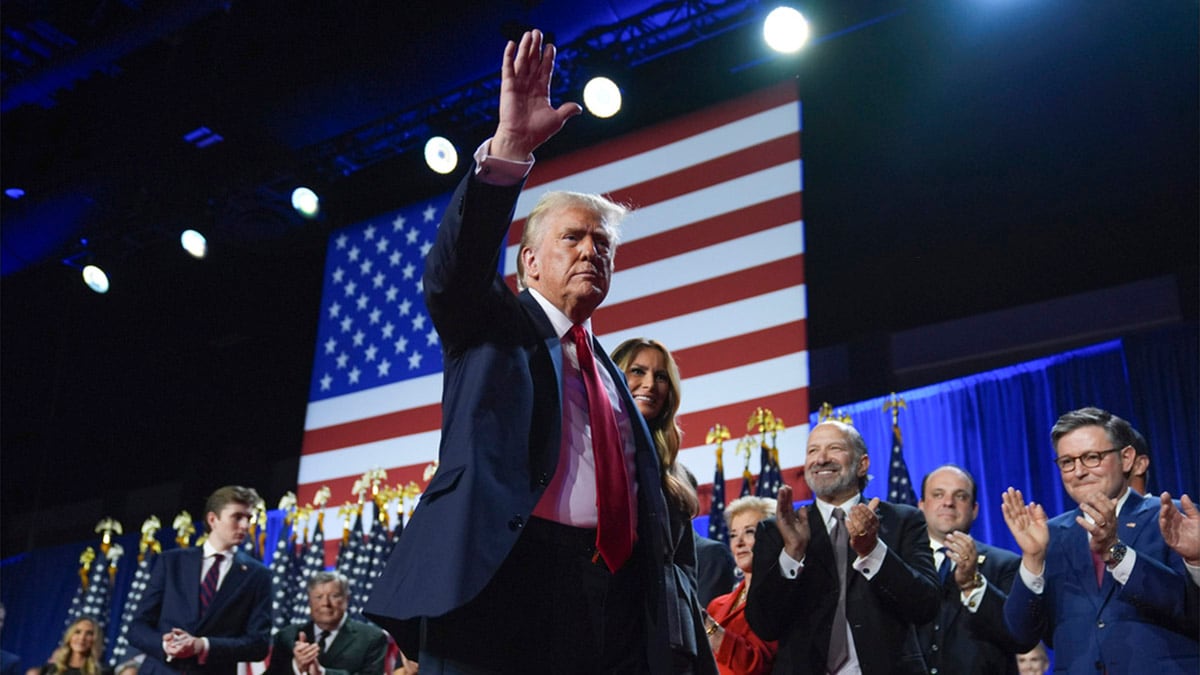
In the early 1990s, Japan’s economy appeared unstoppable. Dubbed the “Japanese Miracle”, growth surged as the real estate and stock markets reached historic highs. Corporations expanded aggressively, and credit flowed freely, creating an illusion of limitless prosperity.
However, this boom was rooted in speculative bubbles and unsustainable debt levels. When the bubble burst in 1991, Japan entered a period of stagnation now known as the “Lost Decade,” marked by deflation, soaring debt, and sluggish growth that took years to overcome. The recent US economic boom also has some similarities.
America has voted for a new President. However, the president will face a big challenge on the economic front. On closer analysis, the so-called US economic boom is a classic case of distorted, debt-fuelled growth that may prove unsustainable.
Although GDP growth has averaged nearly 3 per cent for nine quarters, this expansion is fundamentally lopsided and exhibits characteristics of a “Kaldorian” imbalance, where increased demand driven by wealthy consumers and concentrated corporate profits skews growth. The bottom 40 per cent of income earners account for just 20 per cent of total consumption, while the richest 20 per cent make up 40 per cent — a record gap according to Oxford Economics. This concentration of spending power aligns with the Keynesian theory of income disparity, dampening aggregate demand, as much of the population lacks discretionary spending power, effectively weakening the multiplier effect of consumption.
Further compounding these structural weaknesses is the unprecedented rise in public debt, which has surged by $17 trillion in the last decade, mirroring the “Kalecki-Levy equation” that links rising deficits with increased corporate profits. Under this framework, government borrowing supports corporate earnings by substituting for weak private demand, propping up an artificial equilibrium in the short term. The federal deficit has grown to over 6 per cent of GDP, with public spending being the primary driver of economic activity.
This dynamic aligns with Minsky’s financial instability hypothesis, which warns that reliance on debt-financed growth amplifies financial fragility. Moreover, the US stock market reflects an unsustainable concentration of capital, with the top 10 companies accounting for 36 per cent of total market capitalisation, marking a peak in concentration since the data began in 1980. This centralisation of corporate power hinders competitive market dynamics, reinforcing economic bifurcation and diminishing innovation — an issue well-documented in monopoly and oligopoly theory.
Meanwhile, foreign inflows, set to hit $350 billion this year, further inflate valuations, creating a situation reminiscent of the “safe asset paradox,” wherein demand for US assets keeps the dollar strong but fosters complacency in addressing the structural risks in fiscal policy. Under the current trajectory, the US risks what economic historian Charles Kindleberger termed an “imperial overstretch,” where rising debts eventually strain the fiscal capacity to sustain dominance. While bond markets have started penalising fiscal profligacy globally, including in the UK and France, heavy demand for dollar-denominated assets has shielded the US — temporarily.
However, rising interest rates signal the market’s growing scepticism, hinting that this artificial growth, supported by mounting deficits, may soon face the limits of sustainability. This trajectory suggests the next administration could contend with the destabilising effects of a debt-laden economy on the brink of exceeding its fiscal bounds, exemplifying the inherent risk in relying on debt as a substitute for organic, broad-based economic expansion. For the incoming administration, a fiscally conservative approach should emphasize restoring budget discipline and reducing the federal deficit to support long-term economic stability.
This could begin with a statutory cap on discretionary spending, aligning it more closely with GDP growth to prevent unchecked expansion. Additionally, phased cuts to non-essential spending — particularly in areas with diminishing returns — would help to stabilise government finances. A conservative approach to entitlement reform could involve adjusting benefits in line with demographic trends without compromising essential services, ensuring programs like Social Security and Medicare remain sustainable without imposing excessive burdens on taxpayers.
Promoting economic growth through targeted tax incentives is also essential. The administration could prioritise tax cuts or credits for capital investments that drive productivity in critical manufacturing, technology, and infrastructure sectors. Simplifying the tax code and reducing corporate tax rates could further attract domestic and foreign investment, spurring job creation and strengthening the country’s economic base.
At the same time, expanding tax-advantaged accounts or deductions for private sector R&D and skills training would encourage businesses to invest in workforce development, addressing productivity concerns without direct government expenditure. The administration could focus on regulatory reforms to foster a business-friendly environment while maintaining necessary oversight. Streamlining regulations, especially in sectors like energy and transportation, could reduce compliance costs and promote private-sector growth.
Additionally, revisiting certain environmental and financial regulations to reduce red tape would encourage domestic energy production and enhance financial market stability. A renewed focus on pro-growth policies, with limited but effective regulation, would help stimulate private investment, support job creation, and lay the foundation for sustainable economic expansion while keeping the government’s role minimal. Finally, the focus should also be on institutional reforms.
Institutional reforms can enhance U.S. economic efficiency by modernising government operations, as research consistently shows that streamlined, transparent institutions foster financial stability and growth.
Studies by Alesina and Perotti (1996) highlight that efficient institutions reduce fiscal waste and build credibility, supporting a stable investment climate. The government could reduce administrative costs and improve service delivery speed by digitising federal agencies and implementing process reengineering. Further, addressing bureaucratic fragmentation through more muscular inter-agency coordination—addressing what Olson (1982) calls institutional sclerosis—could reduce redundant efforts and improve policy cohesion.
Additionally, implementing accountability measures like real-time tracking of government spending and performance indicators, as noted by Mauro (1995) and World Bank findings, would boost transparency and public trust. These evidence-based reforms create a leaner, more agile government capable of supporting economic dynamism without excessive bureaucratic burdens. Aditya Sinha (X: @adityasinha004) is Officer on Special Duty, Research, Economic Advisory Council to the Prime Minister.
Views expressed in the above piece are personal and solely those of the author. They do not necessarily reflect Firstpost’s views. Get all the latest updates of US Elections 2024.











